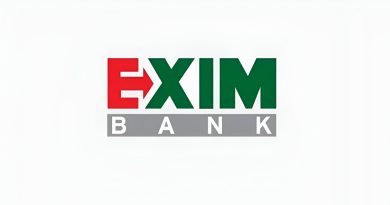As the Bangladesh Bank prepares to unveil its monetary policy for the first half of FY2025–26, a key question looms: is there room to ease the policy rate from its decade-high 10 percent?
Recent economic indicators offer mixed signals. While inflation has cooled, private sector credit growth remains subdued, reflecting lingering fragility in the country’s economic recovery.
Headline inflation fell to 8.48% in June, its lowest level since February 2023 and down from 9.05% in May, following more than two years of monetary tightening. During this period, the central bank raised the repo rate to 10%, marking the highest level in over ten years.
At the same time, the foreign exchange market has shown signs of stabilisation, supported by improved remittance inflows and the adoption of a more flexible, market-based exchange rate regime. These improvements have prompted some market observers to question whether the central bank now has scope to begin policy easing.
Status Quo Expected Despite Easing Inflation
However, Governor Ahsan H. Mansur has indicated that the policy rate is likely to remain unchanged. “There is no reason to reduce the interest rate,” Mansur said in a recent interview, suggesting that the central bank remains cautious about shifting course too soon.
The new Monetary Policy Statement (MPS), scheduled to be announced at 3 p.m. on Thursday, will be the second under Mansur’s leadership since his appointment following the political transition in August last year.
The draft MPS was formulated by the central bank’s Monetary Policy Committee after weeks of consultation with internal and external stakeholders. It is expected to be finalised during today’s board meeting.
Business Sector Presses for Rate Cut
Despite signals from the central bank, sections of the business community continue to advocate for a rate reduction, arguing that the high cost of credit is choking investment and hindering economic recovery.
“The interest rate should be lowered, considering the current economic situation,” said Anwar-ul-Alam Chowdhury Parvez, president of the Bangladesh Chamber of Industries (BCI). He pointed to high borrowing costs, a deteriorating investment climate, and rising non-performing loans (NPLs) as significant barriers.
“Businesses are facing headwinds from elevated bad loans and overall market uncertainty,” Parvez added, urging the central bank to take these realities into account in its policy formulation.
IMF Stance and Credit Growth Concerns
The International Monetary Fund (IMF), which approved a $4.7 billion loan package for Bangladesh, has recommended maintaining the current policy rate at least through mid-FY26 to ensure inflation remains under control. The IMF has also pushed for further liberalisation of monetary tools and increased interest rate flexibility.
Meanwhile, private sector credit growth stood at just 6.4% in June, significantly below the target of 9.8% and one of the lowest figures in recent years. Economists say this weak credit expansion reflects deeper concerns about political uncertainty and investor sentiment, rather than just interest rate levels.
Mixed Views from Economists
Zahid Hussain, former lead economist at the World Bank’s Dhaka office, cautioned against premature rate cuts.
“There’s no scope to raise the policy rate right now, but the question is whether it’s the right time to lower it,” Hussain noted. While a cut could theoretically reduce retail lending rates and stimulate credit demand, he warned that prevailing uncertainty may prevent any meaningful pickup in investment.
“Increased credit demand could simply add inflationary pressure without translating into productive investment,” he said. “Unless confidence is restored, the expected benefits of a rate cut may not materialise.”
Outlook
With inflation showing signs of easing and the foreign exchange market stabilising, the temptation to lower rates is understandable. But the central bank appears poised to prioritise macroeconomic stability and policy credibility — especially under IMF oversight — over short-term relief.
All eyes will be on the Bangladesh Bank’s policy announcement, as markets, investors, and the business community look for clear direction amid a complex and uncertain recovery landscape.






